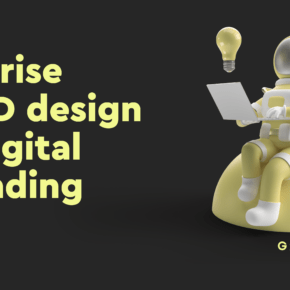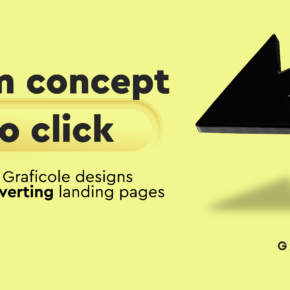Behind every digital interaction lies a feeling. Whether it’s curiosity, trust, excitement, or frustration, emotion is the silent driver of user behavior. In the world of UI/UX, design is no longer just about usability—it’s about how your product or brand makes people feel.
Today’s users expect more than just functionality. They want connection, clarity, and confidence in every click. That’s why brands are shifting toward emotion-driven design, a philosophy that prioritizes the emotional journey of the user alongside the technical one.
At Graficole, we believe great design doesn’t just work—it resonates. We craft digital experiences that speak to the senses, trigger emotional cues, and build lasting brand impressions.
Why Emotion Matters in Digital Design
You may have the most innovative product or beautifully coded site—but if users feel overwhelmed, confused, or indifferent, they won’t convert.
Designing for emotion can:
- Increase engagement by triggering interest or delight
- Build trust through consistency and familiarity
- Drive action by creating emotional momentum
- Improve satisfaction by reducing friction and anxiety
In short, emotion is the fastest route to action. According to research by the Nielsen Norman Group, emotionally engaging designs are more likely to be remembered and recommended.
Understanding Emotional Design in UI/UX
Emotional design isn’t about manipulating users—it’s about understanding their needs, desires, and fears, and shaping design accordingly. This involves:
- Visual aesthetics that create first impressions
- Microinteractions that reinforce user control
- Language and tone that builds brand personality
- Layout and hierarchy that reduce stress and friction
The goal is to create an experience that feels intuitive, safe, and human.
The Psychology Behind Design Choices
1. Color and Emotion
Color is one of the most powerful emotional triggers in design. At Graficole, we carefully select color palettes based on brand values and audience response.
- Blue: Trust, calm, reliability (common in finance and tech)
- Red: Energy, passion, urgency (used for CTAs and alerts)
- Yellow: Optimism, friendliness (great for startups and creative brands)
- Black: Luxury, sophistication (ideal for high-end products)
We use color not only for beauty but also to guide emotional context—whether encouraging a user to relax, act fast, or feel inspired.
2. Typography and Tone
Fonts carry personality. Rounded, sans-serif fonts evoke friendliness. Elegant serifs suggest formality. At Graficole, we align typography with your emotional tone—whether bold and energetic or quiet and refined.
Pair this with UX writing that feels conversational, reassuring, or empowering, and the interface becomes a brand voice in motion.
3. White Space and Layout
White space gives users room to breathe. Cluttered interfaces increase stress and make decision-making harder. Spacing and layout impact:
- Perceived simplicity
- Emotional comfort
- Ability to focus
Our UI/UX layouts use space and balance to create calm, inviting, emotionally safe experiences.
4. Microinteractions: Small Touches, Big Feelings
The subtle animations that confirm a button press, the swipe that glides smoothly, or the loading spinner that dances—these microinteractions are often overlooked, yet they define how users feel.
We use them at Graficole to:
- Reinforce control (button click confirms action)
- Create delight (unexpected visual feedback)
- Reduce frustration (loading progress indicators)
Well-designed microinteractions build emotional trust, showing users the system is listening and responding.
Case Study: Emotion-Driven Redesign for a Wellness App
A wellness app came to Graficole with a simple request: help users feel better—not just through content, but through design. Their old interface was cluttered, grey-toned, and overly technical.
Our approach:
- Shifted to a soothing palette of greens and neutrals
- Introduced soft typography and rounded UI elements
- Animated transitions to mimic natural flow (breathing in and out)
- Simplified the onboarding process to reduce user anxiety
Results:
- 48% increase in session length
- 31% improvement in app store reviews mentioning “design” or “feel”
- 22% drop in bounce rate from the home screen
Design didn’t just guide the user—it changed how they felt about the brand.
Emotional UX and Brand Loyalty
Emotionally intelligent design helps users:
- Feel understood → Personalized layouts and messaging
- Feel in control → Transparent interfaces with undo/redo actions
- Feel appreciated → Gratitude messages, animations, or follow-ups
Over time, these touchpoints foster brand loyalty. People don’t just remember the product—they remember how it made them feel.
Common Mistakes in Emotional Design (and How We Avoid Them)
- Overloading with Animation
Too many moving elements can overwhelm or irritate. We use animation with intention and restraint. - Inconsistent Visual Language
Mismatched fonts, colors, or tone can break emotional flow. Our designs follow consistent brand emotion guides. - Overly Technical UX Writing
Emotion gets lost in jargon. We craft microcopy that’s human, clear, and emotionally attuned. - Ignoring Accessibility
Designing for emotion includes everyone. Our interfaces are designed to be inclusive, readable, and usable for all.
Why Graficole Leads in Emotion-Driven UI/UX
Human-Centered Approach: We start with empathy, not just wireframes.
Psychology-Infused Design: Our designers understand color, spacing, and type psychology deeply.
Bespoke Solutions: No templates. Every design is tailored to your brand’s emotional DNA.
Cross-Platform Excellence: We craft emotional consistency across web, mobile, and app experiences.
Future Trends in Emotion-Centric UI/UX
- Adaptive Emotional Interfaces
Interfaces that adjust tone or layout based on user mood (detected via behavior or wearable data). - Voice and Sound UX
Auditory feedback as emotional reinforcement—especially in mobile and wearable tech. - Emotion AI Integration
Using real-time facial or sentiment analysis to tailor content and UX paths.
Graficole is exploring these frontiers to build next-generation emotional design systems.
Final Thoughts: Great Design Feels Right
Emotion drives behavior. It guides decisions, shapes perception, and builds trust. In a digital world full of noise, emotion-driven design helps brands stand out by connecting on a human level.
At Graficole, we don’t just design what users see. We design what they feel. We believe that beauty, clarity, and emotion together create extraordinary experiences.
📢 Ready to create interfaces that speak to the heart as well as the eye? Let’s design something people will remember.




